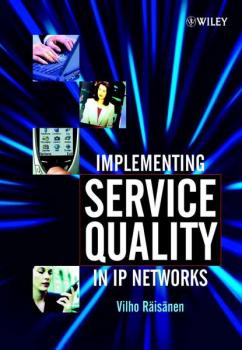Vilho Räisänen
Список книг автора Vilho RäisänenService Modelling
Learn how to use service modelling to streamline and optimize processes! Information about customer needs, the technical composition of services, and service performance are fundamental to effective service management. Service modelling is a structured approach to utilizing this information to improve the way services are delivered. Consistent application of service modelling provides the automation of processes and timely access to information. Service Modelling presents a comprehensive, up-to-date overview of the topic, presented in the context both of business processes, and of requirements stemming from the need to manage network resources. Vilho Raisanen delivers a justification for service modelling, and explains state-of-the-art concepts, frameworks and standards in detail. Service Modelling: Provides a complete and illustrated overview of state-of-the-art concepts for service modelling, covering requirements and frameworks. Includes industry initiatives, conceptual frameworks, and the work of standardisation bodies. Discusses different modelling approaches, and the positioning of modelling of services in service management and in the wider operational context. Sets the modelling framework in the context of business drivers and modelling paradigms. Illustrates principles with real-world use cases, providing both fixed Internet and mobile network examples. Relates concepts to the work of TeleManagement Forum, giving practical examples throughout. Service Modelling: Principles and Applications is an invaluable guide to service modelling for telecommunications and data communications professionals, including vendors, operators, consultants, training organizations, service and content providers, system architects and engineers for IP-based services. Educational organizations, advanced undergraduate and graduate students on telecommunications and networking courses will also find this text invaluable.
Implementing Service Quality in IP Networks
While more and more data is shifted from circuit-switched to packet-switched networks, the users of these networks expect a smooth, continuously unproblematic service (unrelated to the amount of data transported). Therefore, the reliability of a network as well as the satisfaction of its users relies largely on Quality of Service (QoS). Service quality through resource management in IP networks will ensure that sufficient resources are available to fulfil the delay of applications and packet loss requirements. This year several books on QoS from the angle of operators/engineers have been published HOWEVER, none of these titles tackle the management side of the problem. This book shows how to determine quality requirements of services, it discusses and considers the various means of allocating network resources and of supervising the service quality. Furthermore, it explores strategies for allocating network resources and their relation to revenue or operator utility as well as service allocation optimization. The book concludes with a Nokia case study that illustrates the previously mentioned concepts. Essential reading for networking professionals wishing to understand service quality management in IP networks, as well as students needing to understand principles and basic techniques of service quality management.

